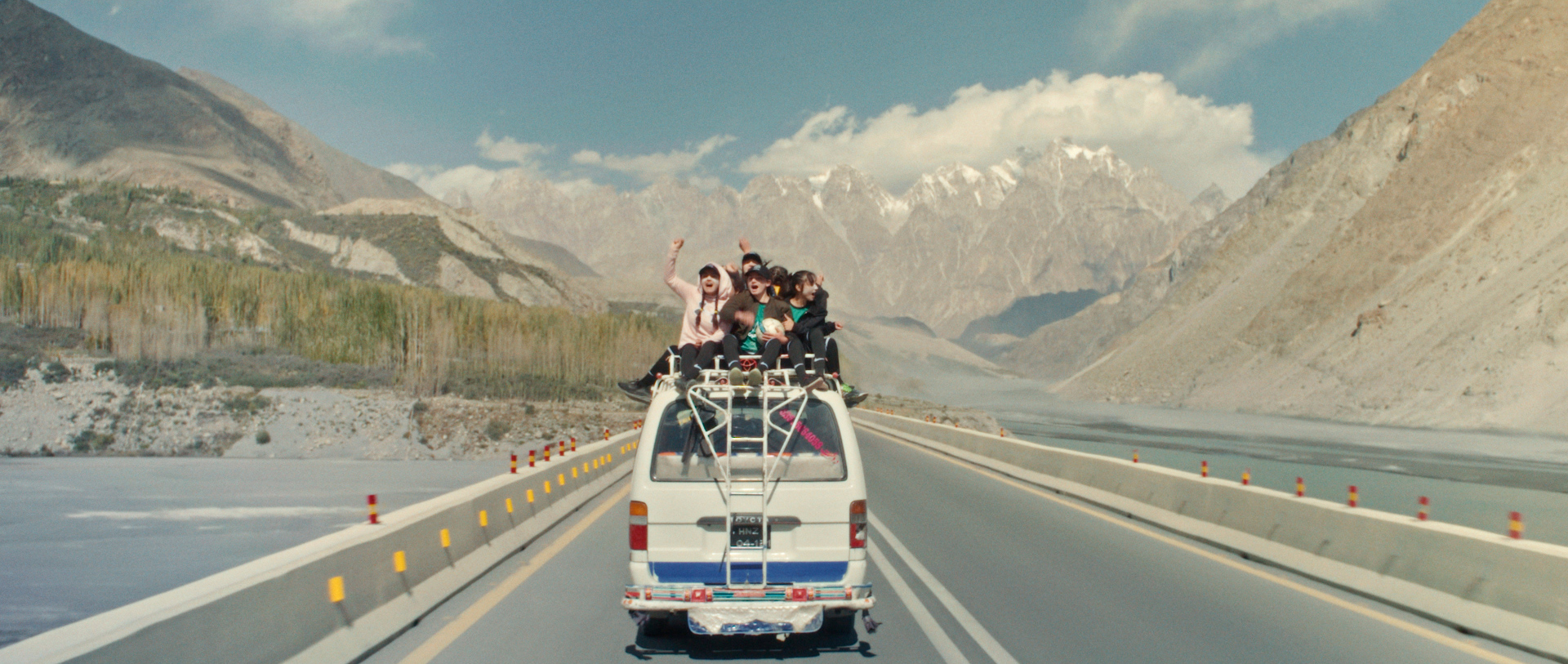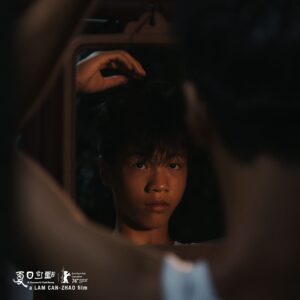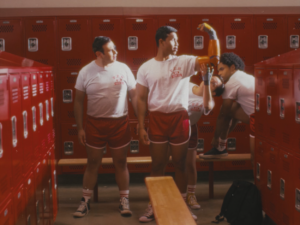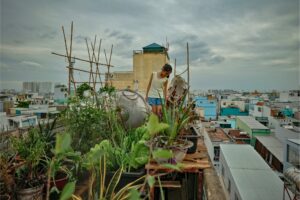What We Learn As We Grow: Coming-of-Age Reflections from LAAPFF 2025
October 16, 2025

At the 2025 Los Angeles Asian Pacific Film Festival, five standout shorts offered nuanced portrayals of adolescence. Each film explored the jagged edge between childhood and adulthood through wildly different aesthetics, cultures, and emotional truths. Whether shot on archival VHS, stylized as retro-futurist health class films, or rooted in rural oral history, A Summer’s End Poem, Growing Up, Puberty for Humans, Rooftop Lempicka, and Girls Move Mountains all reminded audiences that the process of growing up is rarely clean. It is awkward, often beautiful, and deeply political.
“We Are Not Just Becoming Adults. We Are Becoming Ourselves.”
 A SUMMER’S END POEM (2024)
A SUMMER’S END POEM (2024)
In A Summer’s End Poem, director Lam Can-zhao zooms in on one tender act: a boy spending his summer savings on a haircut that he believes will transform him. “He’s not exotic, he’s not a symbol. He’s just a kid with a small longing that ends up teaching him something about the adult world,” Lam says. That longing is framed by a larger social context: migration, labor separation, and linguistic loss. “So in a way, this film is a memory. Not just of a summer, but of a language, a rhythm, a way of seeing the world.”
 GROWING UP (2025)
GROWING UP (2025)
That same emotional layering threads through Ann Sun’s Growing Up, built entirely from her father’s camcorder footage in 1990s Beijing. “These were recorded without any agenda other than memory-keeping,” she shares. “I can’t meet my 30-year-old father in person anymore, but I get to engage with him. His gaze, his artistic choices. Through the footage he left behind.” The film is not only an exploration of intergenerational relationships but also a quiet act of reframing Chinese identity through domestic, intimate moments. “The cyclical nature of life unfolds in front of my eyes,” Sun reflects. “Watching the little Ann in those tapes brought energy back to me.”
 PUBERTY FOR HUMANS (2025)
PUBERTY FOR HUMANS (2025)
Wester Demandante takes a sharper, satirical approach in Puberty for Humans, a retro-styled sci-fi comedy where students learn about “robotic puberty” from a fictional health instructor. “The fear of being left behind has been a recurring theme throughout the development of this project,” Demandante writes. “Not only is a character in the film dealing with this worry, but so are the creatives on the other side of the camera.” Through playful aesthetics, Demandante pushes for more expansive storytelling where youth of color exist beyond realism. “We now have the freedom to explore fun genre projects,” he says. “It’s time for us to break free from those worlds and play around in sci-fi.”
 ROOFTOP LEMPICKA (2024)
ROOFTOP LEMPICKA (2024)
That freedom to imagine is central to Rooftop Lempicka, where Vietnamese director Hang Luong Nguyen revisits her childhood memories of growing up in a rented family home filled with strangers. “A lot of [the tenants] were women from the countryside doing odd jobs,” she recalls. “The friendships I made with them were influential to my growth.” Her film layers those formative experiences with visual references to modernist painter Tamara de Lempicka, whose work becomes a portal for the young protagonist’s own awakening. “I hope to preserve this in a form of oral history through art.”
 GIRLS MOVE MOUNTAINS (2023)
GIRLS MOVE MOUNTAINS (2023)
For Spanish filmmaker Anna Huix, the coming-of-age process intersects with activism in Girls Move Mountains. Shot in Pakistan’s Karakoram Mountains, the film follows Karishma, a young woman leading a girls’ soccer league in the face of conservative backlash. “There is joy after the struggle,” Huix shares. “The film begins by presenting a problem. But finally, it happens and one of the teams wins.” At the heart of Karishma’s strength is her grandmother. “One of the main topics is precisely intergenerational dialogue and how older generations inspire the new ones,” Huix writes. “In a way, Girls Move Mountains is an ode to intergenerational support, love, and inspiration between women.”
A Tapestry of Small Rebellions
Though distinct in tone and style, these five films share a desire to complicate what it means to grow up. They show us that the act of becoming isn’t about arriving. It’s about noticing: the silences in a family archive, the way a new friend changes your worldview, or the audacity of choosing your own image. Whether it’s reclaiming endangered languages, reframing cultural memory, or imagining new worlds where adolescents of color take up space, these artists expand what coming-of-age can look like on screen.
At LAAPFF 2025, these shorts didn’t just tell youth stories. They honored the personal as political, the specific as universal, and the growing pains that shape us all.

 tweet
tweet share
share
